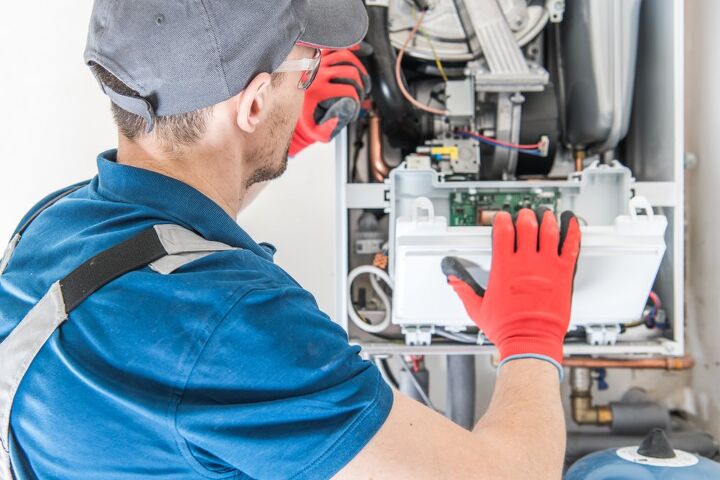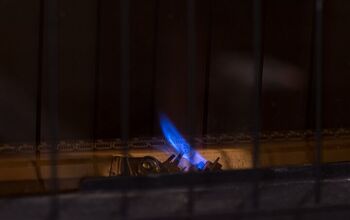How Do I Know If My Furnace Flame Sensor Is Bad?

When it comes to your home’s heating situation, there are very few things as annoying (or potentially dangerous) as a gas furnace with a bad flame sensor. Your furnace’s flame sensor is the tool that is in charge of shutting off the gas when a flame isn’t detected while your furnace is supposed to be firing. Without a functioning sensor, you run the risk of having a gas leak that leads to an explosion.
A furnace flame sensor that’s gone bad can be seen through two main “tells.” If your sensor is corroded, cracked, or burnt, it’s terrible. A furnace that doesn’t stay lit and goes in short cycles is also a sign that you have a flame sensor in need of replacement.
Knowing when it’s time to replace your furnace flame sensor is a vital part of practicing fire safety in your home—much like learning how to tell how much propane is left in a tank. If you’re not sure whether you should get your sensor replaced, this guide will help you out.
Do You Need Gas Furnace or Forced Air Heating System Installers?
Get free, zero-commitment quotes from pro contractors near you.

How Do I Know If My Furnace Flame Sensor Is Bad?
There are two main ways to figure out whether or not your flame sensor is bad: by looking at it or by observing how your furnace is acting. Both diagnosis methods can help you spot. We’ll walk you through each option and explain how to proceed in each way.
How To Look At Furnace Flame Sensor
In order to see if your flame sensor is busted, you’re going to need to go into your furnace. Thankfully, it’s not that big a deal. Here’s how to do it:
- Turn off the electric power to your furnace, and shut off the gas valve. This prevents you from having a gas leak while you work. Not to mention, killing the power to any unit you’re about to work on should always be your first step. This helps prevent the possibility of any accidents or electrocutions while you work.
- Remove the flame sensor mounting screw. If you aren’t sure what a flame sensor looks like, look for a small white pole with a metal point at one end. It will be mounted outside of the burning assembly of your furnace. Remove the screws that keep it in place. Make sure you set these screws somewhere you can easily access them to put the unit back together when you’re ready.
- Gently pull out the flame sensor. This is the only way to see what’s going on with your sensor. You’ll need to look at all sides of it to see if there are any problems.
Please note that, after a diagnosis, you should always put the flame sensor back in or replace it. A furnace should never run without a sensor!
Visual Signs Of A Bad Flame Sensor
Once you’ve pulled out your flame sensor, it’s time to take a look at the overall health of the flame sensor. Visual clues can help you figure out the best course of action. Doing a visual inspection is relatively easy to do once you’ve pulled out the sensor. Here’s what you need to do:
- The first thing you should do is to see if it’s dirty. A soot-covered sensor won’t do much good, simply because all that gunk can make it hard for the sensor to pick up on the presence of a flame.
- Suppose you notice that your sensor’s dirty, wipe the grime off using a fine-grit emery cloth. This might fix your problem, but it also serves a second purpose. It’s very hard to see what’s wrong with a sensor if it’s covered in dirt! The emery cloth can also help remove small to moderate amounts of corrosion, which will help your sensor function better.
- Look for intense corrosion or cracks. If a flame sensor has gotten corroded due to humidity in the air, it’s not going to be able to do its job correctly. The same can be said about a sensor that has been cracked or chipped due to impact or heat exposure.
If you notice signs of damage to the flame sensor, then you need to replace the flame sensor in your furnace. There are no ifs, and, or buts about it.
Is Your Furnace Acting Wonky?
The other significant sign of a bad flame sensor deals with the way your furnace is behaving. More specifically, most people start noticing a flame sensor issue when they realize their furnaces aren’t actually keeping them warm. If your furnace will light but shuts itself down after a couple of seconds, the chances are that you might have a bad sensor.
If your furnace flame goes out almost immediately, then it’s safe to say that the furnace sensor has probably gone bad. Should you notice this issue, it’s best to replace the furnace sensor as soon as possible.
What To Do When You Have A Bad Furnace Flame Sensor
The obvious answer to this is that you are going to have to replace it.
This means you will need to buy a new sensor compatible with the furnace model you have or a universal model. You will then need to switch the old sensor out and add the new sensor to your furnace. The overall process shouldn’t take more than a couple of minutes and is fairly easy to do, which makes it an excellent DIY project.
Of course, if you don’t feel like going into your furnace to replace the sensor, you can always hire an HVAC tech to help you switch it out. However, that’s pretty pricey…
How Much Do Furnace Flame Sensors Cost?
The amount of money you should expect to pay for your replacement sensor will vary based on the brand and model of your furnace. Most flame sensors will cost between $5 and $75 dollars, with $40 being the average price. If you don’t want to get a brand-specific sensor, then you can opt for a (usually cheaper) universal sensor instead.
On a similar note, if you choose to hire a professional to replace your sensor, prepare to pay up. A typical flame sensor replacement call will cost you between $65 and $150 for labor alone. This is due to the fact that contractors typically have minimum work charges as part of their company policies.
What To Do If Replacing Your Sensor Didn’t Fix Your Issues
If replacing your flame sensor didn’t fix the “short cycles” of your furnace, the best thing you can do is call a professional. They’ll do a more in-depth diagnostic to figure out what’s wrong. From there, you’ll be able to get things fixed and ensure that your furnace is still safe to use. In these situations, it’s safe to say that calling a professional is worth every penny.
How To Test A Flame Sensor On Your Furnace
Testing your flame sensor will ensure that it’s functioning correctly. This way, you’ll know whether it’s safely regulating the flow of gas. Here are the steps to test your flame sensor:
- Turn off the power and the gas. Before attempting this project, you will need to ensure the gas and electricity are both shut off to the unit.
- Locate the flame sensor. The flame sensor is usually found on the back side of your furnace. There should be a little panel that you’ll need to remove to gain access to the sensor.
- Remove the flame sensor. Remove the clamp that’s holding the sensor in place. Then, pull on the wire boots to disconnect the leads.
- Test your sensor. Put your multimeter on the resistance setting and touch both of the probes onto the white and blue wire ports of your sensor. The result should be low resistance. Then, set the open end of the sensor onto a 60-watt light bulb or onto a test lamp. Your multimeter should show high resistance.
- Act accordingly. If your multimeter doesn’t show any discrepancies in its resistance readings, you can go ahead and reinstall the flame sensor. However, if it does, you’ll need to replace it with a new one.
Do You Need Gas Furnace or Forced Air Heating System Installers?
Get free, zero-commitment quotes from pro contractors near you.

Our Final Take
When you own a gas furnace, you need to take fire safety very seriously. And that includes knowing how to spot a bad furnace flame sensor. The good news is that it’s pretty easy to tell when your flame sensor is going bad. Most of the time, a visual inspection will reveal soot, corrosion, and cracks that are to blame for a faulty sensor.
Of course, there are moments where you might not even need to check inside your furnace to figure out that something’s not right with your sensors. If your furnace won’t stay lit, it’s probably a broken sensor to blame.
Most furnaces will eventually have a sensor that goes bad, but it’s not a big deal. All you need to do is replace your sensor. Replacing your furnace sensor is, thankfully, a delightfully quick and inexpensive fix. After you replace the sensor, it’s safe to say that your furnace will be a lot more lit.

Ossiana Tepfenhart is an expert writer, focusing on interior design and general home tips. Writing is her life, and it's what she does best. Her interests include art and real estate investments.
More by Ossiana Tepfenhart






















![12 Washing Machine Brands to Avoid [with Recall Data]](https://cdn-fastly.upgradedhome.com/media/2023/07/31/9075781/12-washing-machine-brands-to-avoid-with-recall-data.jpg?size=350x220)




